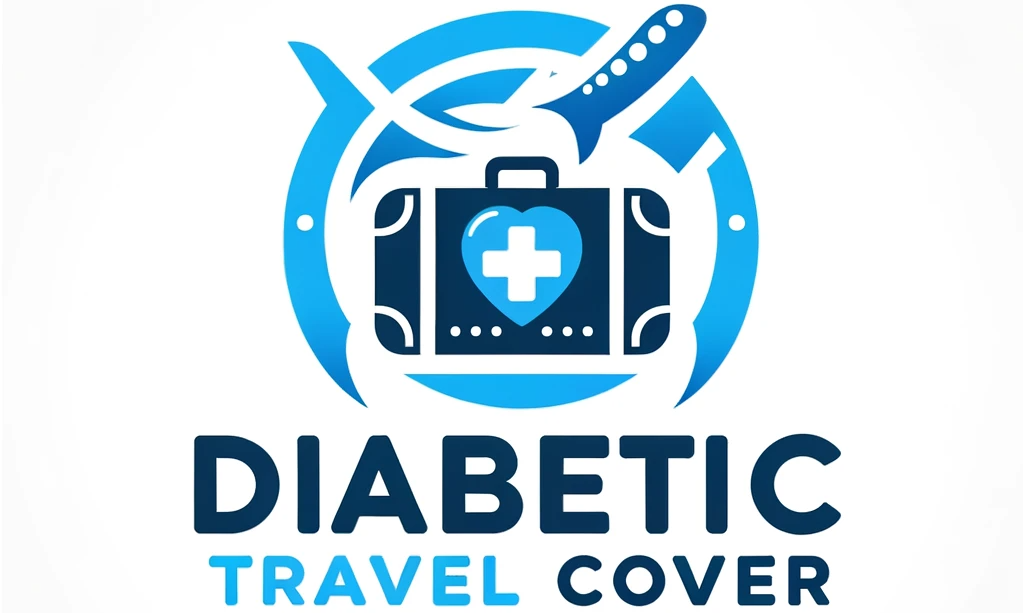Planning a cruise vacation can be an exciting experience, but if you or someone you know is diabetic, there are a few important things to keep in mind. In this article, we will explore the ins and outs of cruise travel for diabetic passengers, providing you with valuable information and tips to ensure a smooth and enjoyable trip. From managing medication to navigating dining options, we have got you covered. So, sit back, relax, and let’s embark on a journey of discovery together.

Selecting the Right Cruise Line
When planning a cruise vacation, it is important to select a cruise line that understands and caters to the needs of passengers with special medical conditions, such as diabetes. Before booking your cruise, take the time to research and understand the approach of different cruise lines towards passengers with special needs. Look for cruise lines that have a clear policy and procedures in place to support diabetic passengers throughout their journey.
Understanding their approach on passengers with special needs
Different cruise lines have different approaches when it comes to accommodating passengers with special needs. Some cruise lines prioritize accessibility and have dedicated staff to assist passengers with mobility issues. Others go the extra mile by offering enhanced services tailored specifically to diabetic passengers. Look for cruise lines that provide detailed information on their websites or reach out to their customer service to get a better understanding of their approach and the services they offer for passengers with diabetes.
Ensuring they have medical facilities
One of the crucial aspects to consider when selecting a cruise line is whether they have adequate medical facilities onboard. When you have diabetes, it is essential to have access to medical assistance in case of emergencies or any unexpected health issues. Check if the cruise line has a well-equipped medical center staffed with qualified medical professionals who can assist you. Additionally, inquire about the availability of necessary medical supplies and equipment to manage your diabetes effectively while on board.

Checking if they offer meals catering to diabetics
Maintaining a healthy diet is important for managing diabetes, even while on a cruise vacation. Find out if the cruise line offers meals that cater to diabetics. Some cruise lines offer specialized menus or the ability to request meals specifically designed for passengers with diabetes. Having access to balanced meals that consider your dietary needs can make a significant difference in managing your blood sugar levels while enjoying your cruise.
Packing Essentials for Diabetic Passengers
When packing for your cruise, ensure you have all the essential items and documents to manage your diabetes effectively and ensure your safety while onboard.
Securing adequate supply of medication and insulin
Make sure you pack enough medication and insulin to last the entire duration of your cruise, including extra supplies in case of any unforeseen delays. Properly store your medication, keeping them at the recommended temperature, and separate them into different bags to prevent loss. It is also advisable to keep a copy of your prescription in case you need to purchase additional medical supplies during your journey.
Carrying identification stating you are diabetic
Carrying identification that states you are diabetic is crucial, especially in case of any medical emergencies or if you require medical attention while onboard or during shore excursions. A medical ID bracelet or a card in your wallet can provide important information to medical professionals if the need arises.
Emergency contact information and travel insurance
Always carry a list of emergency contact information, including the contact details of your healthcare provider. Additionally, having travel insurance that covers medical emergencies is highly recommended. Ensure that your insurance policy specifically covers any potential complications related to your diabetes and that you have all the necessary documents readily available.
Managing Blood Sugar Levels Onboard
Managing your blood sugar levels effectively while on a cruise can significantly impact your overall experience. Here are some essential tips to help you maintain stable blood sugar levels during your trip.
Time zone changes and its effect on medication schedule
If you are traveling across different time zones, it is important to consider how these changes can affect your medication schedule. Consult with your healthcare provider before your trip to determine the best way to adjust your medication timings to accommodate the time zone changes. Adhering to your medication schedule is crucial to maintain stable blood sugar levels.
Importance of regular testing and monitoring
Regularly testing and monitoring your blood sugar levels is essential while on a cruise. Make sure you pack your glucose meter, testing strips, and other necessary supplies. Establish a routine for monitoring your levels and set reminders if needed. Being proactive in managing your blood sugar levels will help you enjoy your cruise without any major health concerns.
Carrying snacks to prevent low blood sugar levels
Pack snacks that can help prevent low blood sugar levels, especially during activities or excursions. Opt for snacks that are low in sugar but high in protein or complex carbohydrates. Nuts, trail mixes, and whole grain crackers are great choices. Having these snacks readily available can help you maintain stable blood sugar levels throughout your cruise experience.

Meal Planning on the Cruise
Meal planning plays a crucial role in managing diabetes while on a cruise. Here are some tips to help you make informed choices when it comes to food options onboard.
Advantages of discussing dietary needs with the cruise staff
It is highly recommended to inform the cruise staff about your dietary needs, especially if you have diabetes. Discussing your specific requirements with the onboard dining staff can help ensure that suitable meal options are available to you. The staff can provide guidance on selecting meals that align with your dietary needs and assist in making necessary substitutions or modifications.
Choosing the right food options
When selecting food options onboard, opt for meals that are rich in fruits, vegetables, lean proteins, and whole grains. Avoid excessive consumption of foods high in saturated fats, sodium, and processed sugars. Look for grilled or baked options instead of fried foods, and choose sauces and dressings on the side to control portion sizes and sugar intake.
Importance of balanced meals and limiting carbohydrate intake
Maintaining a balanced diet is crucial for managing diabetes. Aim to have meals that contain a combination of carbohydrates, proteins, and healthy fats. Limit your carbohydrate intake by choosing smaller portions or substituting high-carb items with healthier alternatives, such as opting for whole wheat bread or brown rice instead of white bread or white rice.
Physical Activities and Exercise
Physical activities and exercise are important for maintaining overall health and managing diabetes. Here’s how you can incorporate physical activities into your cruise experience.
Taking advantage of onboard fitness facilities
Most cruise ships offer onboard fitness facilities, including gyms and fitness centers. Make it a point to utilize these facilities during your cruise. Engaging in regular exercise can help regulate blood sugar levels, manage weight, and contribute to your overall well-being.
Joining group activities
Many cruise ships organize group activities such as Zumba classes, yoga sessions, or aqua aerobics. Participating in these activities not only allows you to stay physically active but also offers the chance to socialize with fellow passengers who share similar interests. Check the cruise itinerary or the ship’s daily schedule for information on group exercise activities.
Planning shore excursions with physical activities
When planning shore excursions, look for opportunities to engage in physical activities. Consider activities like hiking, snorkeling, or biking, which not only provide a chance to explore new destinations but also offer an opportunity for physical exercise. Engaging in physical activities during shore excursions can help you balance your blood sugar levels while immersing yourself in exciting experiences.
Alcohol Consumption Rules
It is important to understand the impact of alcohol consumption on blood sugar levels, especially if you have diabetes. Keep the following points in mind when it comes to alcohol consumption on a cruise.
Understanding the effect of alcohol on blood sugar levels
Alcohol can affect blood sugar levels and may cause fluctuations. It is important to monitor your blood sugar levels when consuming alcoholic beverages, as they can either cause hypoglycemia (low blood sugar) or hyperglycemia (high blood sugar). Consider consulting with your healthcare provider for specific guidelines on alcohol consumption.
Stating safe drinking limits for diabetic passengers
Moderation is key when it comes to alcohol consumption for diabetic passengers. It is recommended to drink in moderation or follow the guidelines provided by your healthcare provider. Remember that excessive alcohol consumption can lead to poor judgment, a decrease in blood sugar levels, and potentially dangerous situations.
Choosing low-sugar cocktails and drinks
If you choose to consume alcohol while on a cruise, opt for low-sugar cocktails or drinks. Sugary alcoholic beverages can cause a significant spike in blood sugar levels. Select options that are lower in sugar content or consider alternatives such as light beer or dry wines. Always be mindful of the total carbohydrate content when choosing your alcoholic beverages.
Coping with Seasickness
Seasickness can be a common concern for some passengers during a cruise. It is important to be prepared and take appropriate measures, especially if you have diabetes.
Recognizing the symptoms
Seasickness symptoms include nausea, dizziness, and vomiting. If you experience these symptoms, it is important to address them promptly to avoid additional stress on your body and your blood sugar levels.
How it can affect your blood sugar levels
Seasickness can potentially disrupt your eating routine and affect your blood sugar levels. The inability to eat properly due to nausea or vomiting can lead to fluctuations in blood sugar levels, both too high or too low. Monitor your blood sugar levels closely during episodes of seasickness and adjust your food intake accordingly.
Preventive measures and treatments available
To prevent or alleviate seasickness, several measures can be taken. Consider wearing acupressure wristbands designed to relieve nausea or taking over-the-counter medications approved by your healthcare provider. Sit or stand in an area with less motion, such as the middle of the ship or on lower decks, and focus on fixing your gaze on a stable object. These measures can help reduce the severity of seasickness symptoms and minimize the potential impact on your blood sugar levels.
Handling Medical Emergencies
Although cruise ships have medical centers onboard, it is important to know how to handle medical emergencies while on a cruise, especially if you have diabetes.
Knowing the location of the medical center onboard
Familiarize yourself with the location of the medical center onboard the cruise ship. Take note of the operating hours and the contact details of the medical staff. In case of a medical emergency or urgent assistance required, you’ll be able to reach the medical center easily.
Familiarizing yourself with the emergency procedures
Understanding the emergency procedures on the cruise ship is essential. Pay attention to the safety drills and instructions provided at the beginning of your voyage. Know how to access emergency medical assistance and the steps to follow in case of a medical emergency.
Contacting your emergency medical assistance service
Before embarking on your cruise, ensure you have the contact information for your emergency medical assistance service readily available. In case of a medical emergency, contact them immediately for guidance and support. Inform them about your location and the situation at hand, so they can provide the appropriate assistance.
Keeping Doctor’s contact information
Maintaining communication with your healthcare provider while on a cruise is essential to ensure your health and well-being.
Importance of having doctor’s contact information
Have your doctor’s contact information easily accessible in case you need to reach out for medical guidance, especially during emergencies. Your healthcare provider can provide specific advice related to your diabetes management while on the cruise and help you make informed decisions.
Updating them about your travel plans
Before your cruise, inform your healthcare provider about your travel plans. Share details about your destination, duration of the trip, and any specific concerns or requirements you may have. This will help your doctor provide you with appropriate recommendations and ensure you have the necessary resources to manage your diabetes effectively.
Seeking advice regarding medication during trip
Consult with your healthcare provider regarding your medication regimen while on a cruise. Discuss any adjustments that may be necessary due to changes in routine, time zone differences, or potential interactions with any new activities or medications. It is important to have a clear understanding of any changes or precautions you need to take to maintain optimal health during your cruise.
Post-Cruise Check up
After returning from your cruise, it is important to prioritize your health and well-being by following up with a medical check-up.
Getting a medical check-up after returning
Schedule a post-cruise medical check-up with your healthcare provider. This will allow them to assess your overall health and review the impact of the cruise experience on your blood sugar levels and diabetes management. They can provide any necessary adjustments to your medication or treatment plan based on the observations and results.
Readjusting medication schedule
If there were any changes to your medication schedule or routines while on the cruise, work with your healthcare provider to readjust back to your regular routine. Ensure that any temporary adjustments made during the cruise are reverted as per the guidance of your doctor.
Evaluating cruise travel experience for future planning
Reflect on your cruise travel experience and evaluate how well you managed your diabetes during the trip. Take note of any challenges, successes, or areas for improvement. Use this knowledge to plan future cruises and make adjustments that will help you have an even more enjoyable and comfortable experience as a diabetic passenger.
Cruise Travel for Diabetic Passengers: Things to Know.

